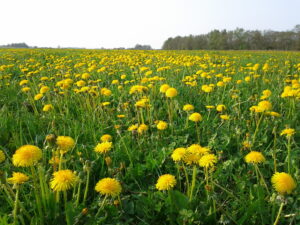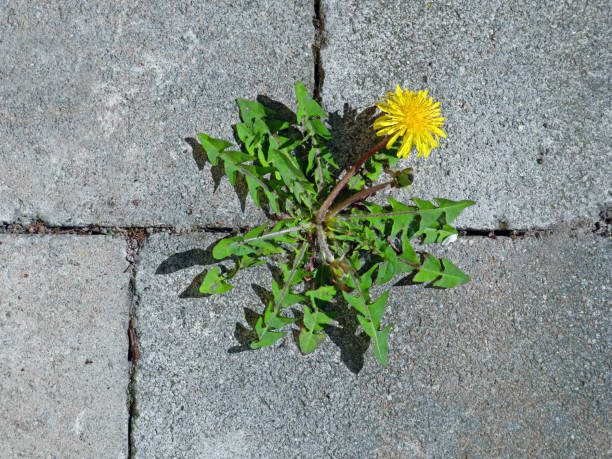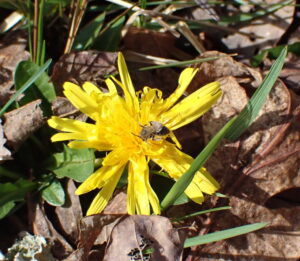by Abigail Kingston
You have probably heard of Kudzu, the invasive species that blankets huge areas of the Southeast in carpets of vines so thick they can starve even mature trees. And, at this time of year, in mid-March, you have probably noticed the hillsides of Central Kentucky coated in what looks like a blanket of snow, but is actually a monotypic horde of Callery pear trees, more commonly known as Bradford pears.
Invasive species can happen when a plant is introduced to an ecosystem it is not native to. Kudzu and Callery pear are both native to Asia, where they are valuable parts of their ecosystems—but in America, they don’t know how to behave, and they grow out of control, replacing biodiverse ecosystems with dense, homogeneous thickets where native species cannot survive.
But will an introduced species always become invasive? Is it possible for an introduced species to benefit the ecosystem?
Some scientists say yes—and I think the perfect example is a plant familiar to us all: the dandelion. Dandelion was originally introduced to the Americas as a food crop, but it is now considered a weed and a pest.
“Weed” is a colloquial word that can refer to any plant growing where humans don’t want it. But the word “weed” isn’t entirely meaningless—most plants considered weeds have a similar set of characteristics: they’re tough, they reproduce quickly, and they thrive easily in areas that have been heavily disturbed, whether by lawn mowers, construction, farm machinery, or any human activity that disrupts the soil and the existing plant community. In ecology, such plants are known as pioneer species or disaster species. This means “weed” simply refers to a plant that has a particular job—restoring an ecosystem after it has been damaged.
Natural events like tornadoes, hurricanes, volcanic eruptions, and wildfires can wipe out a mature plant community. Just an inch of topsoil, such as the rich soil layer found in a prairie or old-growth forest, can take a hundred years to build. This means that when a natural disaster sweeps through an area, erosion could afterward wash away hundreds or even thousands of years of topsoil, wiping out the soil seed bank and the living community of soil organisms along with it. The soil left over is low in nutrients and comparatively empty of life, unable to support the same types of plants that were present before the disaster took place.
This is where “weeds” come in. Aggressive, fast-growing, capable of overtaking an area lickety-split with a choking thicket of vegetation, weeds put a stop to erosion as if patching up a bleeding wound. They cover the soil with a layer of vegetation that protects it from extremes of heat and dryness. They prepare the soil to host new life.
Why, then, do weeds have such a bad reputation? Many human activities simulate the effects of a natural disaster on an ecosystem, inadvertently creating the perfect conditions for the “weeds” we despise. Nature can’t tell the difference between a pristine lawn and a forest that has been wrecked by a tornado—they are both similarly empty of lush, diverse vegetation!
But how does the dandelion fit into this? Unlike the “weeds” native to our continent, dandelion did not evolve here. Surely, then, dandelions can’t be suited to performing an important job in the ecosystem that evolved in Kentucky…unless… the ecosystem has changed in other ways?
Over the past two hundred years, the ecosystem of Kentucky has been profoundly devastated. Nearly all of our old growth forests have been destroyed, and our canebrakes fared even worse, with only a few scattered patches of native cane remaining. The unique oak savanna environment of the Bluegrass was replaced with horse and cattle pastures. Coal mining severely polluted our freshwater environments and destroyed and defaced many of our mountains. And finally, meadows and woodlands that could have once contained hundreds of unique sedges and wildflowers were replaced with paved roads, parking lots, and homogenous lawns that provide no food for pollinators. Clearly, our native weeds did not evolve for this.
However, nature is constantly changing and adapting, and for this new class of disturbance, there is a new weed: the dandelion.
A disaster species has the important characteristic of helping the ecosystem along to the next phase of regrowth. As soon as shrubs, tall grasses, and perennial wildflowers have grown back, the weeds cannot compete with them, and politely disappear. This contrasts with an invasive species, which slows the next phase of regeneration or stops it from happening. A thicket of Callery pears, for instance, outcompetes new tree seedlings for sunlight, choking and shading them out and hindering the thicket’s progression to forest. While dandelion is aggressive, it is not ecologically destructive in the same way as many other species labeled “invasive,” because its favored habitat is in lawns, bare dirt, gravel, and concrete, in frequently disturbed, depleted, or heavily compacted soil where other plants cannot survive.

In a concrete sidewalk or lawn, it’s unlikely to see native New England aster or Canada goldenrod. Gravelly roadsides and pavement are too hostile for the native plant species that our pollinators depend on. This means that, for a bee, many of our man-made environments would be empty deserts with no food in sight.
But dandelions do what those native plants can’t: they bloom, and feed pollinators, in the most hostile environments we can create.
Dandelion has the characteristics of a disaster species: it is adaptable, spreads and reproduces quickly, and aids the survival of other plants. Its numerous seeds are spread great distances by wind and can be produced at almost any season of the year, making it near-impossible to keep them away. Since dandelion can germinate and bloom at a wide variety of temperatures, it is a source of pollen and nectar in early spring and late fall when food for pollinators is scarce. It introduces water, oxygen and nutrients up to 20 inches deep into the ground with its long taproot—much deeper than lawn grass could hope to reach.
 It is still only mid-March, but a few bees, butterflies and other insects have already emerged, perhaps because of unusually warm days for this early in the year. Very few of our native wildflowers are in bloom yet, and even fewer are anywhere to be found in the turfgrass and concrete of our towns and cities. But in these heavily altered environments, legions of dandelions are in bloom.
It is still only mid-March, but a few bees, butterflies and other insects have already emerged, perhaps because of unusually warm days for this early in the year. Very few of our native wildflowers are in bloom yet, and even fewer are anywhere to be found in the turfgrass and concrete of our towns and cities. But in these heavily altered environments, legions of dandelions are in bloom.
Of course, the bees and other pollinators need more help than dandelions alone can provide. A dandelion can do nothing for the many, many insects that can only feed from, or raise larvae on, a few specific native plants. The pollen of dandelion isn’t particularly nutritious—it’s food to survive on, not to live on. And the function of a disaster species is to make way for a much more diverse array of plants to take hold, not to permanently dominate the ecosystem. What a dandelion represents is the power of nature to adapt and hold on, and the possibility of future restoration.
And now—as more and more people are learning the importance of our wild ecosystems and native biodiversity, planting milkweed and asters, turning lawns into meadows, protecting ponds and wetlands, creating prairie gardens, and raising mighty oaks from little acorns—I think it’s true.
Maybe we can adapt, too, and become the disaster species our planet needs.
Just hold on tight. Help is on the way.
